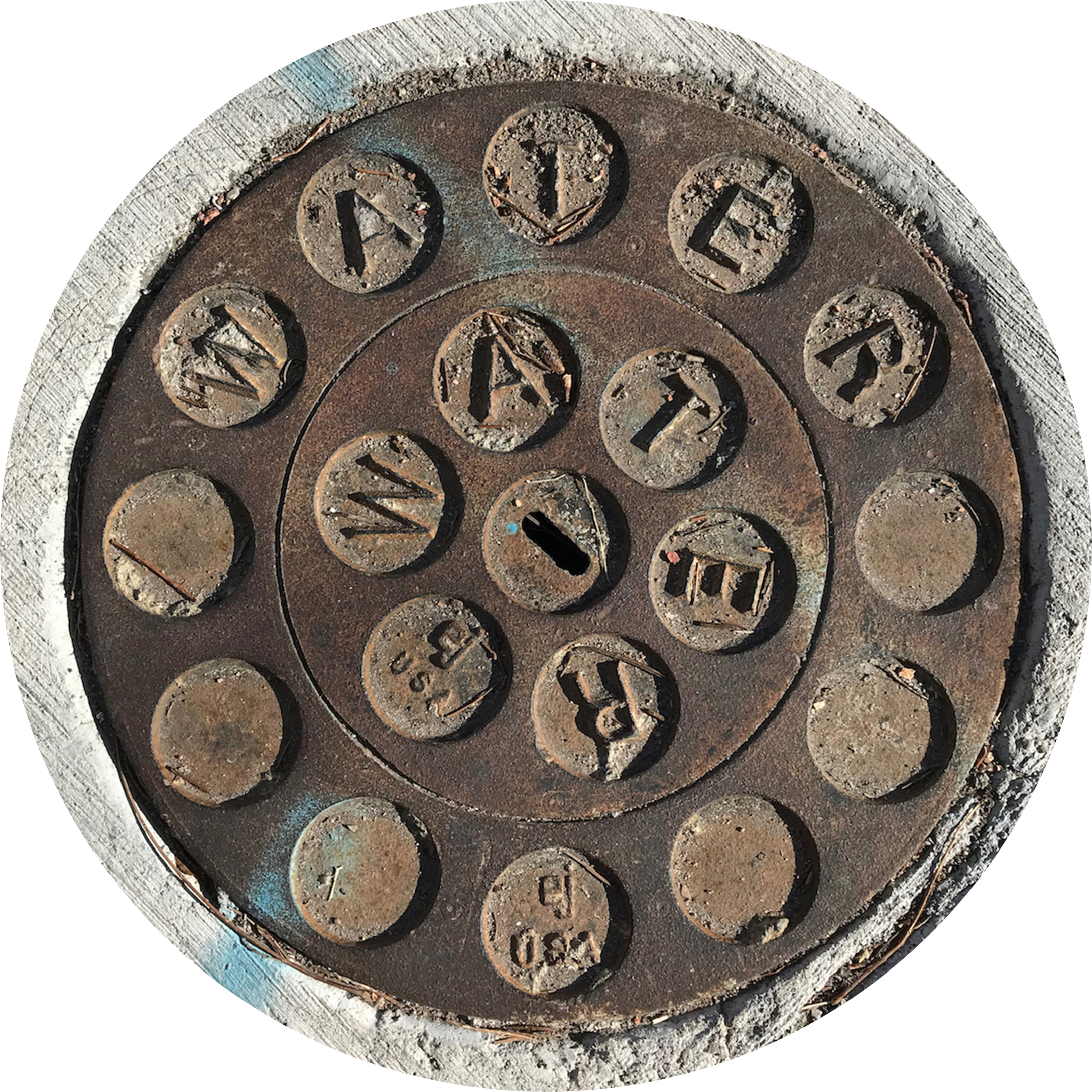
Reconsidering the Aqueduct
By ROBERT LUNDBERG & ALEXANDRA LAKIND
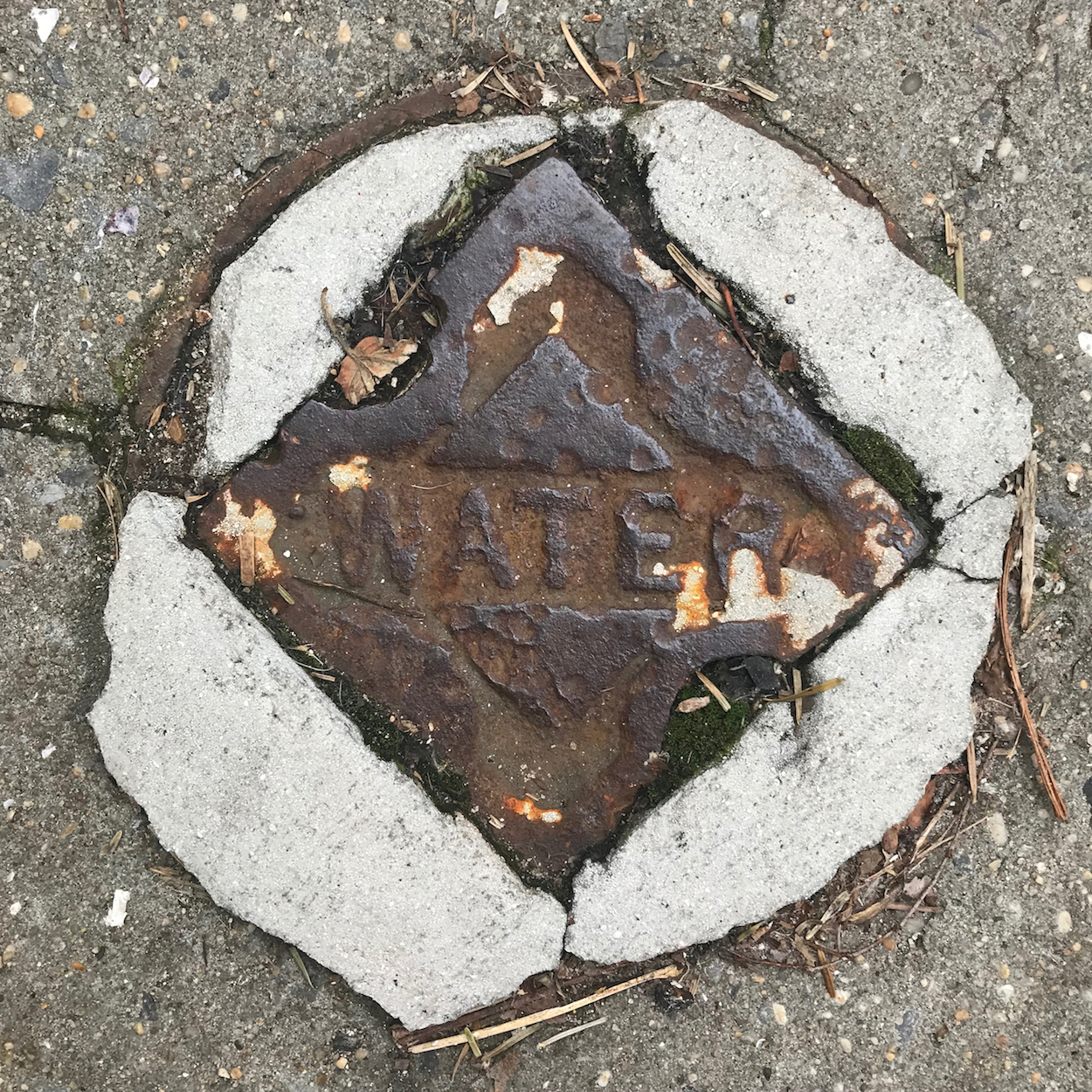
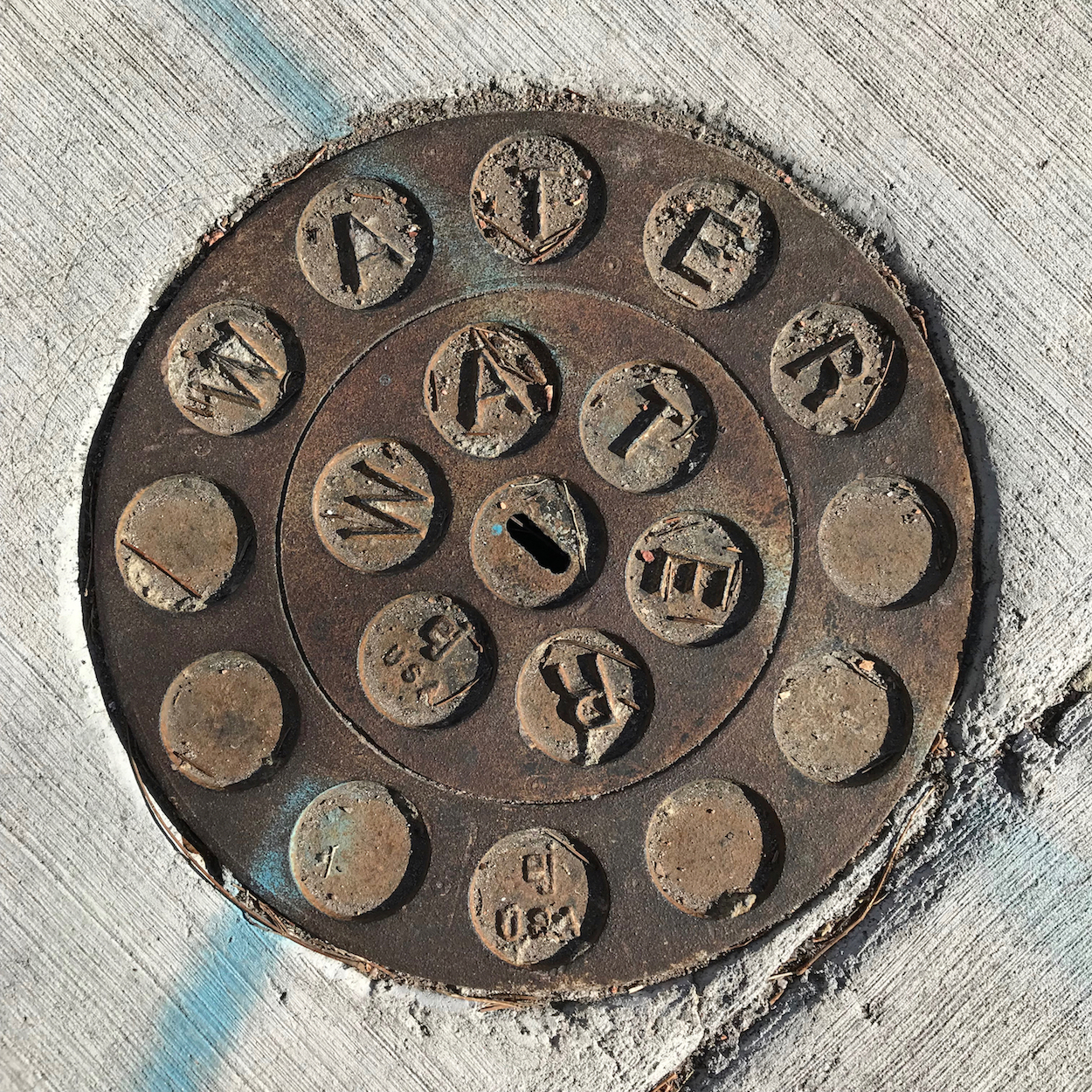
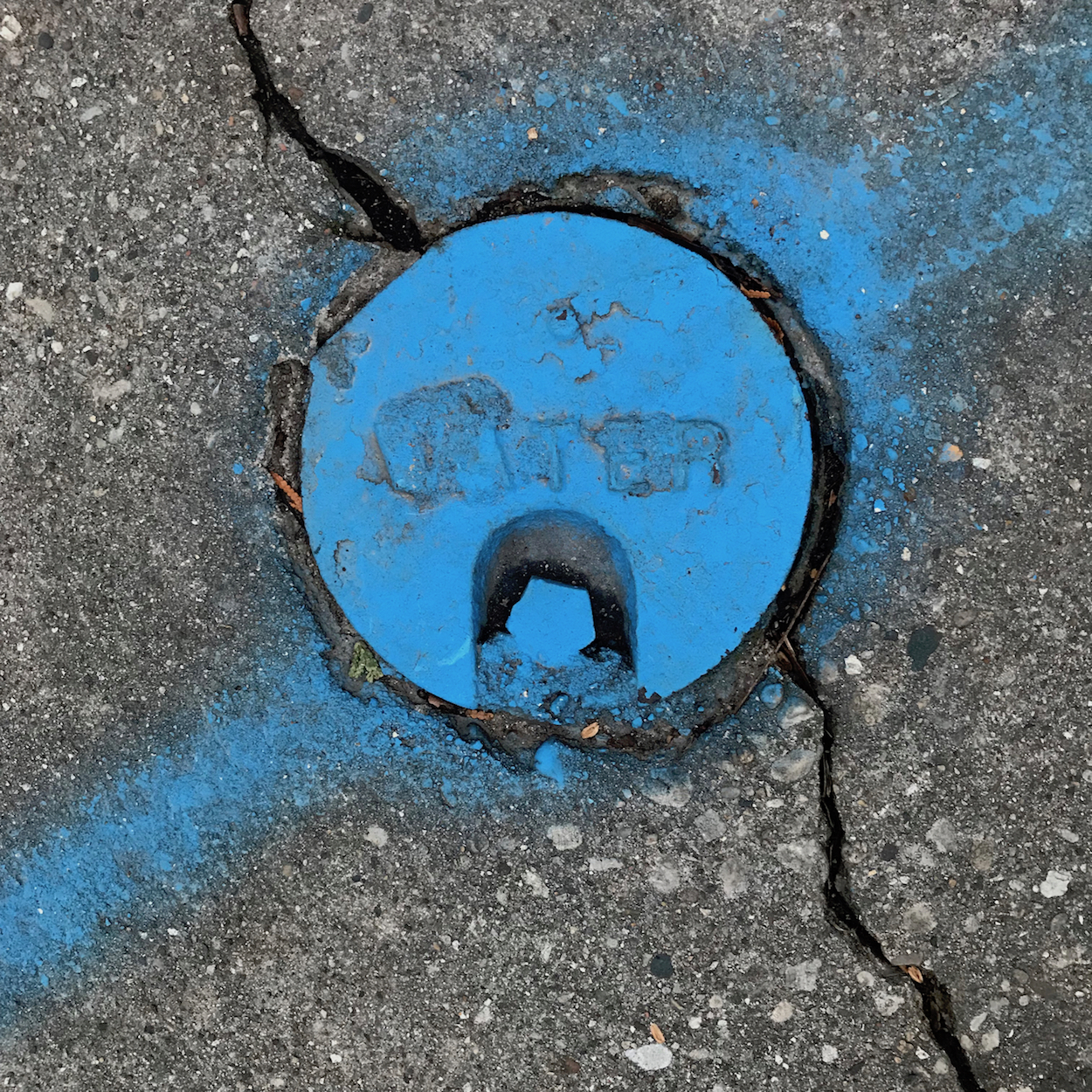
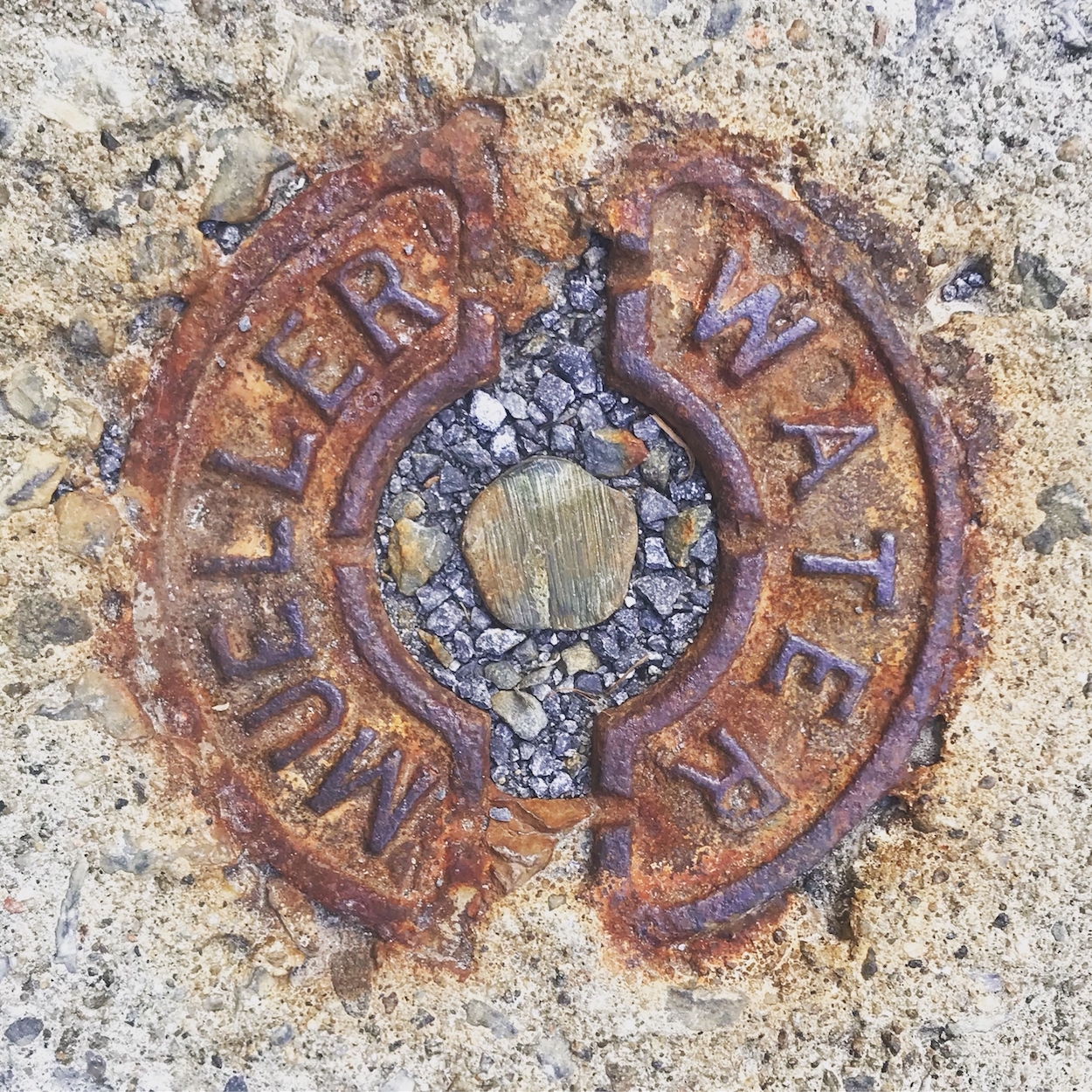

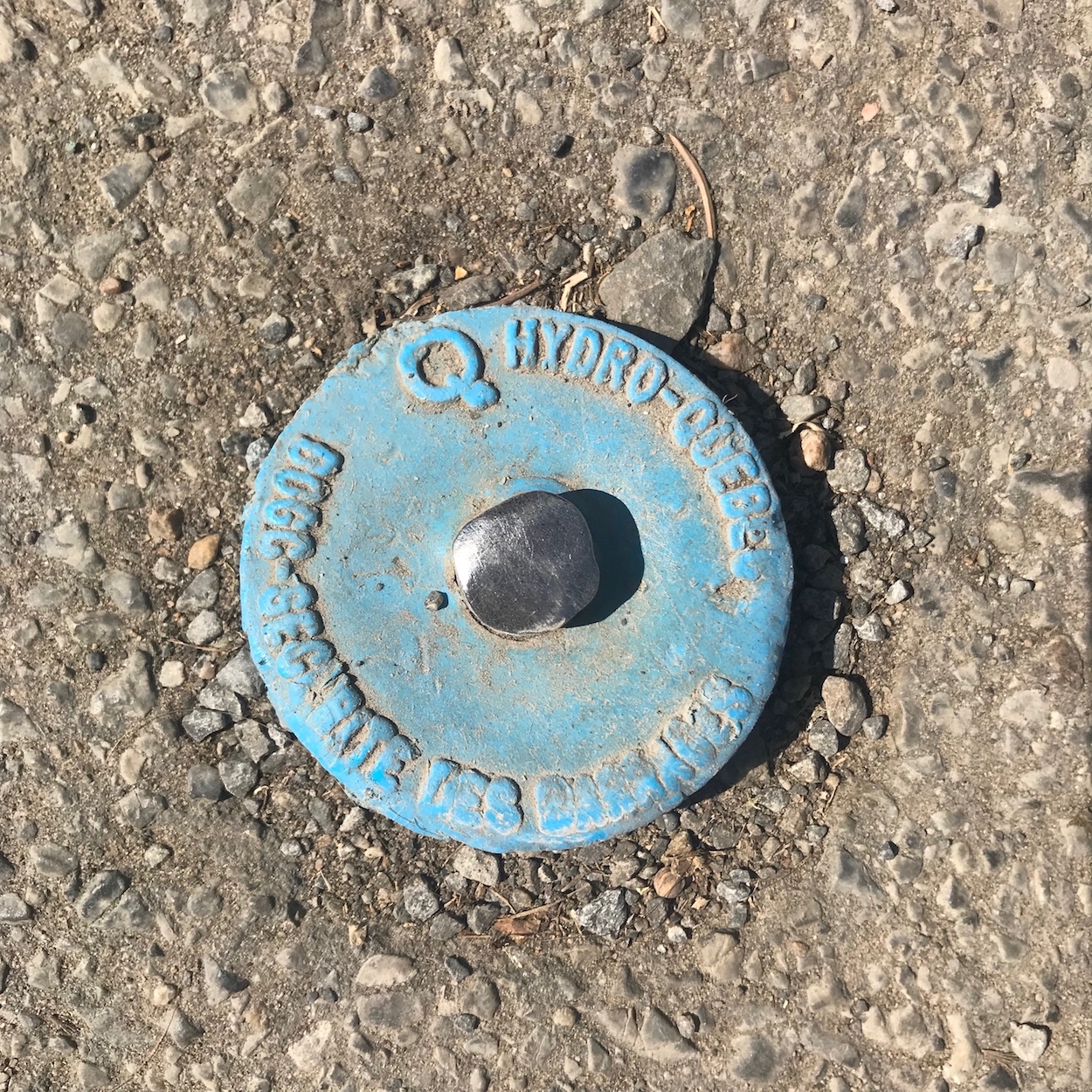
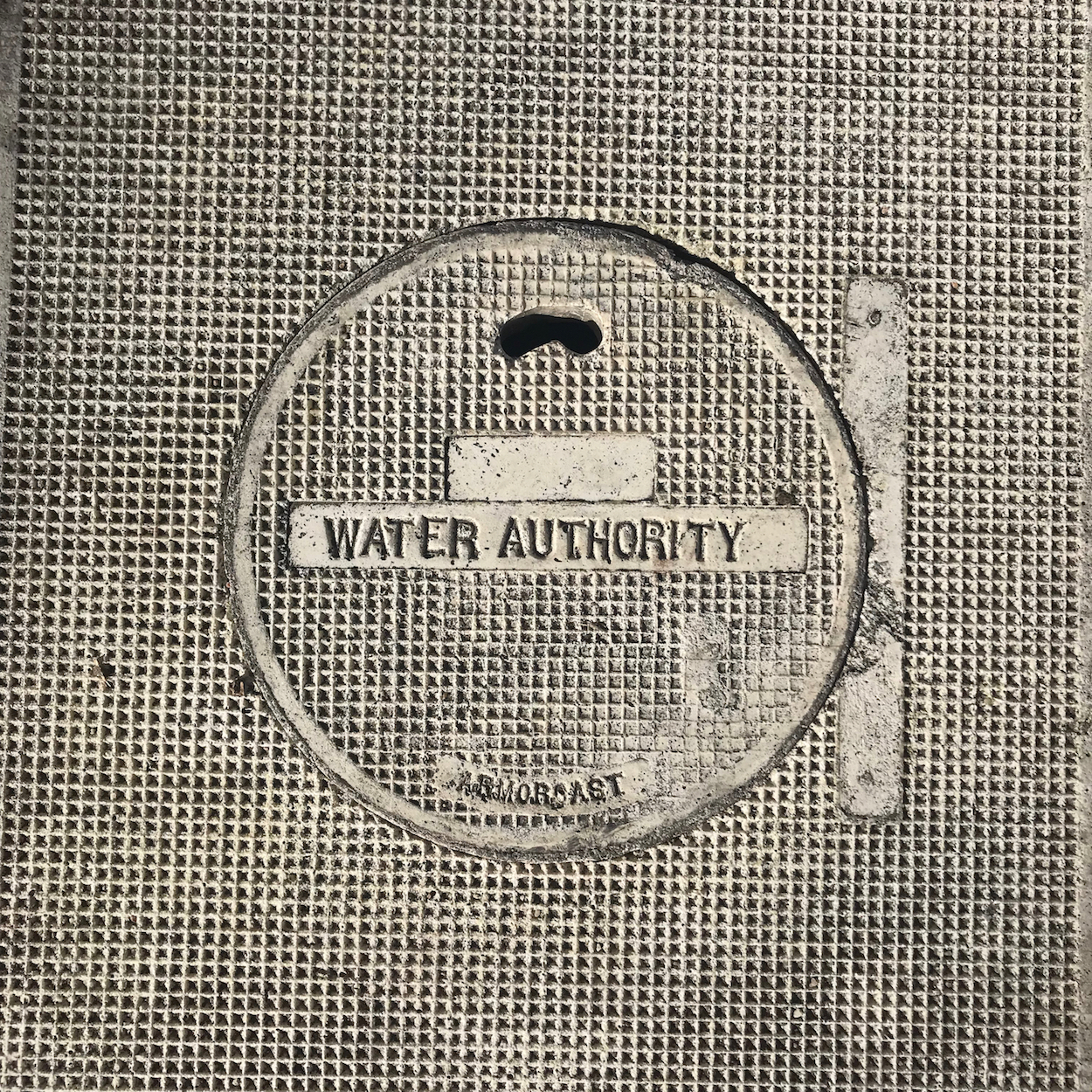
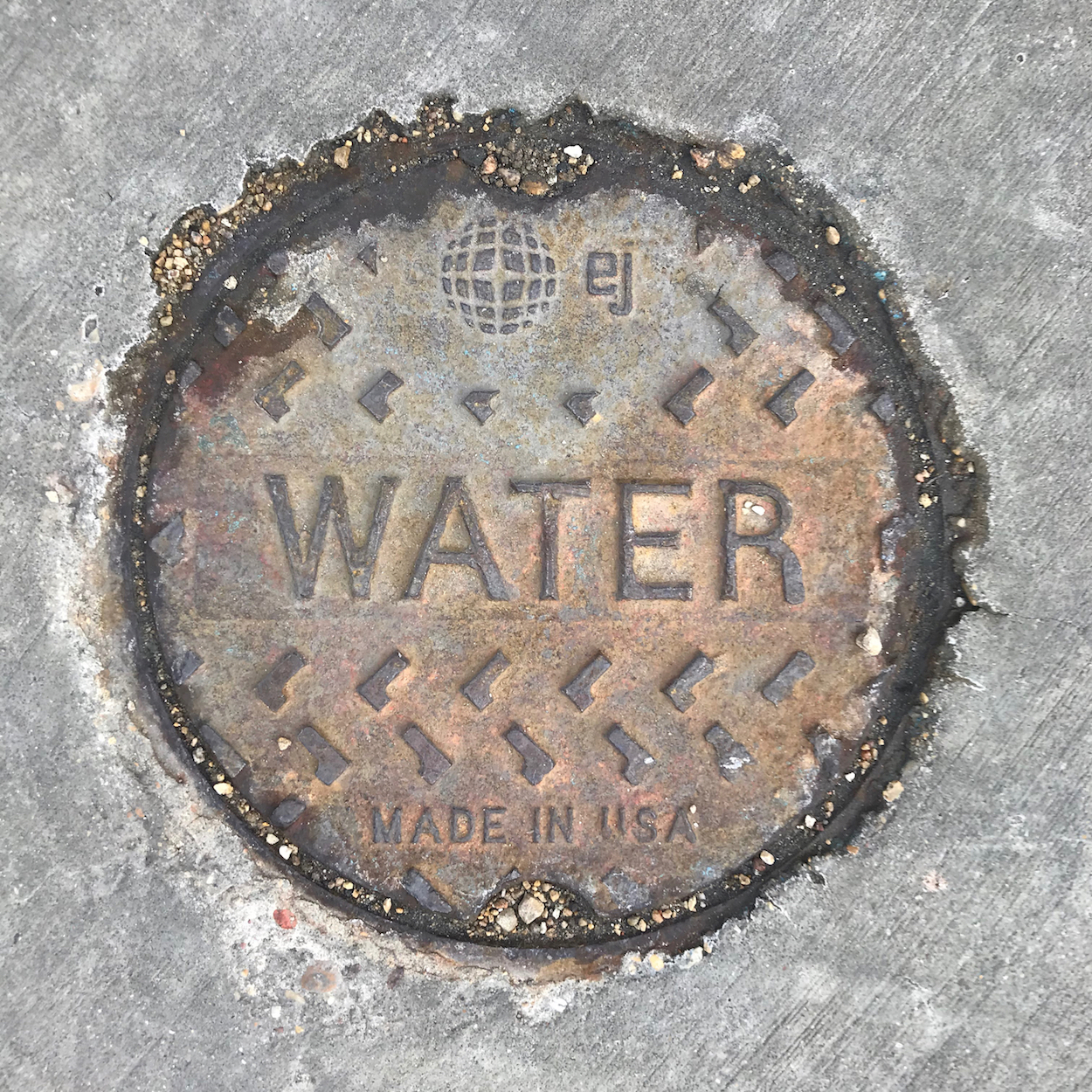

The above images are part of a years-long photographic project documenting water and sewer line covers in sidewalks and streets—circles that hint at vast systems many prefer not to be bothered by. The sidewalk covers also mark the division between public and private property underground, the settler legal landscape physically manifesting for those walking above.
Reconsidering the Aqueduct: How might we reconsider the hidden aesthetics of water infrastructure?
property is not a static, pregiven entity, but depends on a continual, active “doing” - Nicolas Blomley
Wash your hands. With warm water. And soap. At least 20 seconds. And often. Instructions many have heard for years. Instructions many heard and appreciated anew in 2020. As awareness grew of the novel Coronavirus, so did stories about the largely invisible systems carrying water and waste. In many places this infrastructure was built and hidden away decades or even centuries ago. In other places, no pipes were ever laid. Yet, the virus brought visibility. As COVID-19 spread, collaborations between wastewater treatment plants and university researchers led to sampling aggregated municipal poop to get a metropolitan-scale picture of the virus’s presence. During the same time, Catherine Coleman Flowers was named a MacArthur Fellow for her decades of work trying to improve unjust and unequal sanitation and drinking water systems in Lowndes County, Alabama. Not everyone’s water comes out clean, or comes at all.
Looking downward to the cast iron circles that provide entry to underground worlds, we can consider several things: the presence (or absence) of water and sewer infrastructure, its state of (dis)repair, and the propertied logics that undergird the pipes, covers, treatment plants, reservoirs. Water pipes seek to settle not only hygiene, but also divisions between the private and public, individual and state.
The goal of a legal system of property is to clarify rights to a piece of land or quantity of water. Property lines demarcate based on some idea of inclusion and exclusion, what is inside or outside the line. As the thinking goes, a property system clarifies boundaries to benefit the ‘owner’ (whoever that might be) in the form of rewards of capital derived from the investment and labor. Clearly bounding place is akin to dreams of pure and clear water – both aspirational fictions of fixing the unstable. Water is fluid and adept at dissolving and carrying substances. Water mingles. Water resists the constraints of property. Meanwhile the pipes work to shelter potable water from contamination and shepherd sewage safely away, separating desirables from undesirables.
Clarity is sought on all fronts.
In the process of photographing these entry points, cast iron circles, curb-stops, covers, we wondered: what if water infrastructure came up from underground? If these systems were no longer hidden from sight, would we venerate these infrasculptures that embody clarity and property or would we recoil, protesting such structures of domination and expropriation. To bring the hidden aesthetics of water infrastructures into the light, is it time to bring back the aqueduct?